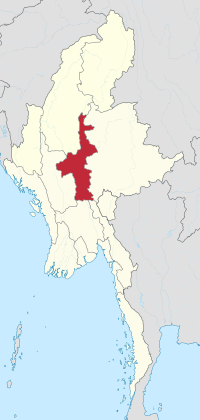
Photo from wikipedia
In Myanmar, the mining sector is playing an important role in contributing to the country’s income. Thus, environmentally and economically sustainable mining activities are essential for the long-term development of… Click to show full abstract
In Myanmar, the mining sector is playing an important role in contributing to the country’s income. Thus, environmentally and economically sustainable mining activities are essential for the long-term development of the sector. In Myanmar, there were a few research for the contamination of surface soil and groundwater of harmful effects caused by improper mining activities. Most of the research interests are geologically mapping for the potential area and chemical refining effect, not including the point of view about the environmental issue in mining areas. The environmental investigation is required in the near future to determine the detailed situation for surface and groundwater quality and human health. According to the previous study, arsenic concentration of groundwater has been found in some places of Sagaing, Mandalay, and Magway regions are higher than the WHO drinking water guideline value of 10μg/L. Gold and copper mineralization is distributed with sulfide minerals in the Mandalay region, Myanmar. Arsenic and heavy metal can be distributed into the environment naturally from the weathering, oxidation, and erosion of sulfide minerals. In this paper, the authors presented the overview of drinking water standards from four Asian countries they are Indonesia, Japan, Myanmar, and Sri Lanka. As a preliminary study, arsenic and some other heavy metal concentration in soil and rock (ore) samples will study from the Gold and Copper mining site in Mandalay Region, Myanmar by different methods. The analytical method is also very important to approach the assessment of environmental contamination because Myanmar is launching the practice of environmental assessment.
Journal Title: International Journal of GEOMATE
Year Published: 2019
Link to full text (if available)
Share on Social Media: Sign Up to like & get
recommendations!